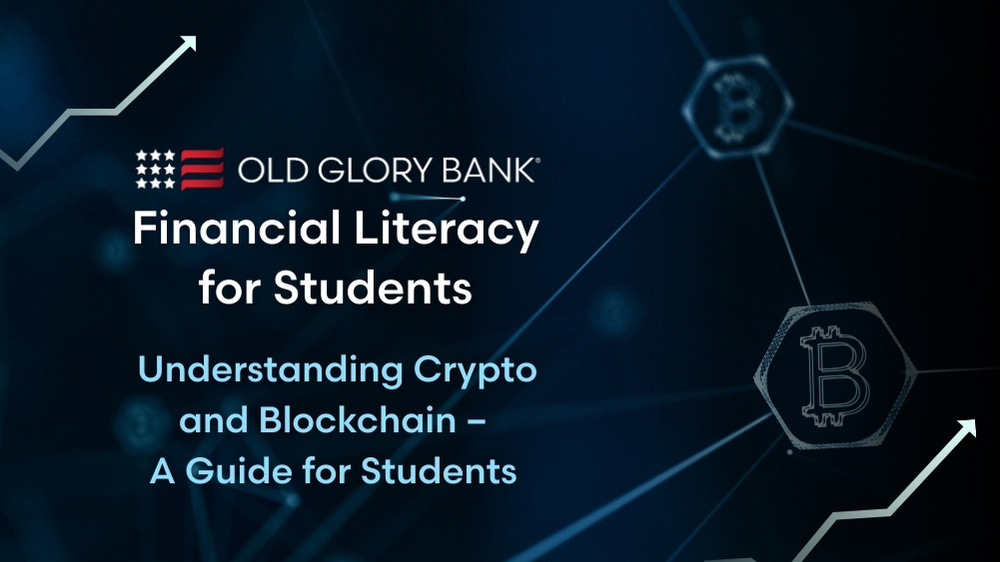Cryptocurrency and blockchain might sound like complicated tech buzzwords, but they’re actually pretty cool once you break them down.
Whether you're curious about Bitcoin, NFTs, or how digital money works, this guide will help you get started.
What Is Cryptocurrency?
Cryptocurrency is a type of digital money. Unlike dollars, it doesn’t exist in physical form and isn’t controlled by a government or bank. Instead, it’s powered by blockchain technology.
Popular cryptocurrencies include:
Bitcoin (BTC) – the first and most well-known
Ethereum (ETH) – used for smart contracts and NFTs
Solana, Cardano, Dogecoin – other coins with different purposes
You can use crypto to buy things, invest, or even support creators online.
What is Fiat?
Fiat currency refers to government-issued money that isn’t backed by a physical commodity like gold or silver. Examples include the U.S. dollar, euro, and yen. Its value is derived from trust in the government and central banks that issue it.
What is a Self-Custodial Wallet?
A self-custodial wallet (also known as a non-custodial wallet) is a type of cryptocurrency wallet in which the user has full control over their private keys and, therefore, their digital assets. Unlike custodial wallets, which are managed by third-party services (like exchanges or financial platforms), self-custodial wallets do not rely on intermediaries, and no individual bank or institution is in control of your assets.
Key Features:
User-Controlled Private Keys: You alone hold the cryptographic keys that grant access to your funds.
No Third-Party Access: No government, bank, exchange, or service provider can freeze, access, or manage your assets.
Enhanced Privacy and Security: Since you’re not sharing control with a third party, your risk of hacks or censorship is reduced, though it also means you’re fully responsible for safeguarding your keys.
Wallets:
To use a self-custodial wallet, you generally need to create one using browser-based software or a hardware wallet.
Hardware wallets include Ledger or Trezor
Software wallets include MetaMask, Trust Wallet, or Electrum
What Is Blockchain?
Imagine a notebook that everyone can see but no one can erase. And then, imagine that there are millions of copies of it, updated continuously, around the world. That’s basically what a blockchain is.
It’s a digital ledger – a record of transactions – that is:
Decentralized: No single person or company controls it
Transparent: Everyone can see the history of transactions (but not your identity)
Secure: Once something is written, it can’t be changed
Each “block” contains data (like a transaction), and blocks are linked together in a “chain.” Hence, blockchain.
How Does It Work?
Here’s a very simplified breakdown:
You make a transaction (for example, you send Bitcoin to a friend).
The transaction is verified by computers (called nodes) on the network.
Once verified, it’s added to a block.
The block is added to the chain, and the transaction becomes permanent.
This process is called mining in some cryptocurrencies, like Bitcoin, where computers solve complex puzzles to verify transactions and earn coins.
Why Is It Secure?
Blockchain uses cryptography (a fancy word for secure coding) to protect data. Every block has a unique code (called a hash), and changing one block would require changing all the others, which is nearly impossible.
How Is It Private?
One of the key advantages of blockchain technology is its ability to safeguard personal privacy while maintaining transparency.
Unlike traditional financial systems that rely on centralized databases storing sensitive user information, blockchain operates on a decentralized ledger where transactions are recorded using cryptographic techniques. Users interact with the network through pseudonymous addresses – long strings of characters not directly tied to their real-world identities. This means that while all transactions are publicly visible and permanent, the identities behind them remain protected unless voluntarily disclosed.
What Should You Watch Out For?
Volatility: Crypto prices can swing wildly.
Scams: Always research before investing.
Regulation: Laws around crypto are still evolving.
Crypto and blockchain are shaping the future of finance, tech, and even art. Whether you’re a gamer, artist, coder, or just curious, understanding these tools can open up exciting opportunities. Choosing a trusted source for managing your crypto is key.
Old Glory Bank recently announced our future unification of Banking and Crypto. We believe Old Glory Bank will be the first bank to easily link your crypto, stablecoins, and self-custodial wallet into a single dashboard, combined with your OGB Accounts. Once linked, you can easily “on-ramp” and “off-ramp” US Dollars (fiat) with popular crypto coins, creating a seamless experience to spend fiat and crypto every day.
OGB Customers will be able to use our new stablecoin, OGBUSD, for payments and remittances around the world. Recipients can hold it, spend it, exchange it for U.S. dollars at Old Glory Bank, or convert it on any exchange supporting ERC-20 standard tokens.
OGBUSD will be backed by US Dollars and guaranteed to remain at a 1 to 1 value to the dollar, so you will always know its value and buying power.

